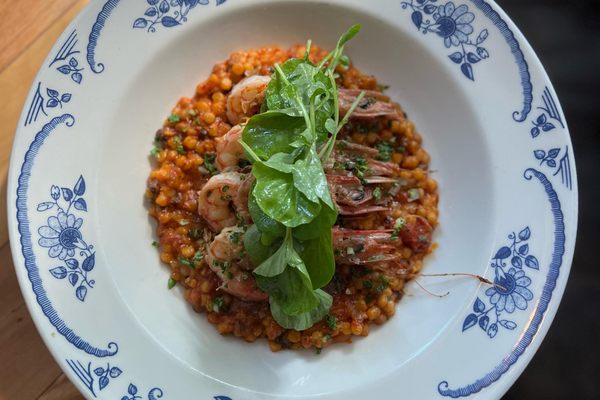About
Chef Don Baldosano is making waves in Manila with his fine-dining restaurant, Linamnam, where degustation menus put modern, innovative twists on Filipino recipes.
Located in his family's backyard, Linamnam (which means “delicious” in Tagalog) was opened in 2018 when Baldosano was still in his teens; fresh from competing on the TV show Junior MasterChef Pinoy Edition and a traineeship at Manila’s esteemed Toyo Eatery.
Linamnam opened its doors to the public in August 2018, offering a warm setting that puts the spotlight on the chef's bold dishes. The main dining room is a bahay kubo, a traditional thatched-roof, stilt house built on stilts typical to the Filipino lowland countryside. Built by Baldosano’s father, it offers an al fresco space adjacent to the chef‘s own childhood bedroom. The central open kitchen, once a home gym, now sets the stage for his one-man culinary show.
Tasting menus consist of 11 to 13 courses divided into five parts: kagat (amuse-bouche), lupa (vegetables), dagat (seafood), karne (meats), and tamis (desserts). Each dish reflects a harmonious blend of nostalgia and experimentation, encompassing Baldosano’s favorite childhood flavors and seasonal ingredients done up with modern culinary techniques.
Hearty hot soups like the caldo hark back to the rice porridge Baldosano ate growing up, upgraded with the fish-forward umami of pompano fat and maya-maya stock. Another highlight is the putong bigas, a soft rice cake made from five different grains sourced from various regions of the Philippines. It is garnished with Beluga caviar and kinuday na taba, a smoked dried pork fat from the Ibaloi indigenous group in Benguet.
Another standout dish is Baldosano’s take on tinapay (bread). Here, the chef serves up a brioche soaked in burnt butter and topped with sisig, a dish of minced pork, calamansi, chicken liver, and chopped onion originating from Luzon. Baldosano combines his sisig with tomatoes grown in the Philippines’ tomato capital Ifugao, offering a unique combination of acidity and the usual savory goodness.
Lesser-known dishes are also showcased, particularly with courses such as the kilawing puso and calumpit longganisa. The former features banana blossoms cooked in vinegar, coconut, daing (dried fish) butter, and moringa leaves, while the latter combines Bulacan longganisa (red pork sausage reminiscent of chorizo) with roasted string beans and red santan flowers.
Related Tags
Know Before You Go
With 10 seats, space at Linamnam is limited. The restaurant is reservation only and requires a seating deposit by bank transfer (proof of payment must be provided by email).
Community Contributors
Added By
Published
July 24, 2023


































